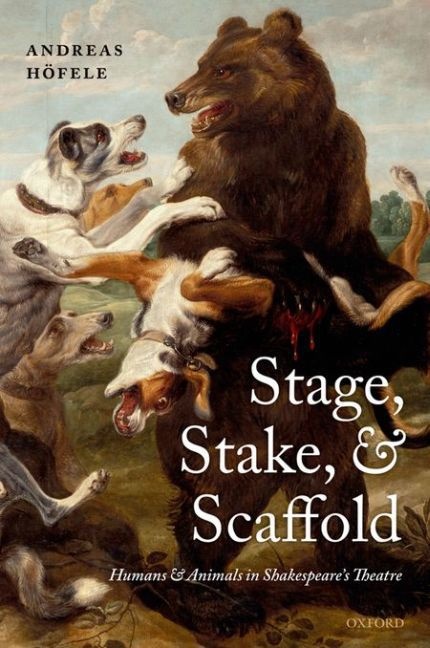Read more
The powerful exchanges between stage, stake, and scaffold - the theatre, the bear garden and the spectacle of public execution - crucially informed Shakespeare's explorations into the construction and workings of 'the human'. The theatre's family resemblance to animal baiting and the spectacle of punishment, its sharing of the same basic type of performance space -- a theatre-in-the-round, a scaffold, stake or platform surrounded by spectators -- bred an ever-ready potential for a transfer of images and meanings. The staging of one of these kinds of performance is always framed by an awareness of the other two, whose presence is never quite erased and often, indeed, emphatically foregrounded. Situating Shakespearean drama within its material environment, Andreas Höfele explores how this spill-over affects the way Shakespeare models his human characters and his understanding of 'human character' in general. His dramatis personae are infused with a degree of animality that a later, more specifically Cartesian, anthropology would categorically efface. Readings based on such an anthropology tend to reduce Shakespeare's teeming multitude of animal references to a stable marker of moral, social, and ontological difference, 'beast' being everything 'man' is not or ought not to be. In contrast, Höfele argues that Shakespearean notions of humanity rely just as much on inclusion as on exclusion of the animal. Humans and animals face each other across the species divide, but the divide proves highly permeable.
List of contents
- 1: 'What beast was't then': Stretching the Boundaries in Macbeth
- 2: A Kingdom for a Scaffold
- 3: 'More than a creeping thing': Baiting Coriolanus
- 4: Cannibal - Animal: Figurations of the (In)Human in Montaigne, Foxe and Shakespearean Revenge Tragedy
- 5: 'I'll see their trial first': Law and Disorder in Lear's Animal Kingdom
- 6: Revels' End: The Tempest and After
- Bibliography
- Index
About the author
Andreas Höfele is Professor of English at Munich University. His publications include books on Shakespeare's stagecraft, late 19th-century parody and on Malcolm Lowry, as well as numerous articles on Renaissance and 20th-century themes and six novels. He is a member of the Heidelberg and of the Bavarian Academies of Science and President of the German Shakespeare Society.
Summary
In Shakespeare's London, the stage of the playhouse, the stake of the bear baiting arena, and the scaffold of public execution constituted an ensemble of related spectacles that shared the same audiences. Andreas Höfele argues that this generated a powerful exchange of images and a spill-over of animal features into Shakespeare's characters.
Additional text
... an illuminating, intriguing, and thoroughly researched work ... Stage, Stake and Scaffold can offer those working on animals in Shakespeare, specifically the dualism between man and beast, a refreshing new take on the role and importance of actual and metaphorical animals and creatures in Shakespearean drama.
Report
[a] sophisticated study of how early modern Europeans conceived of the human being in relation to other species. Russ McDonald, Times Literary Supplement

